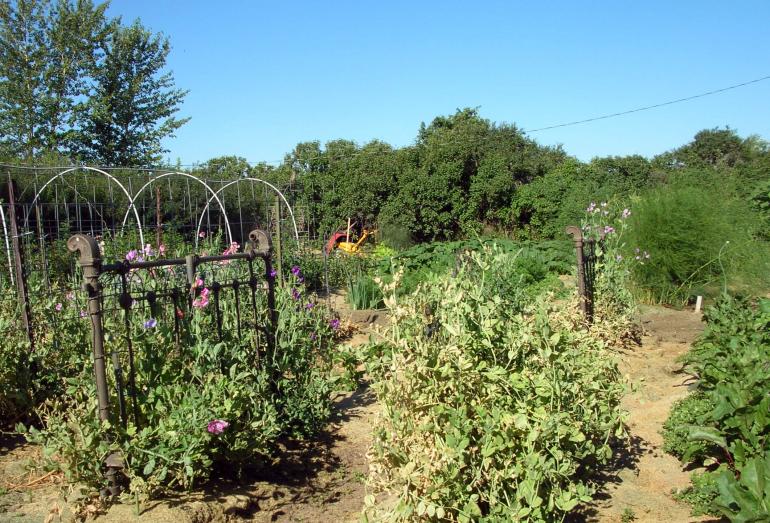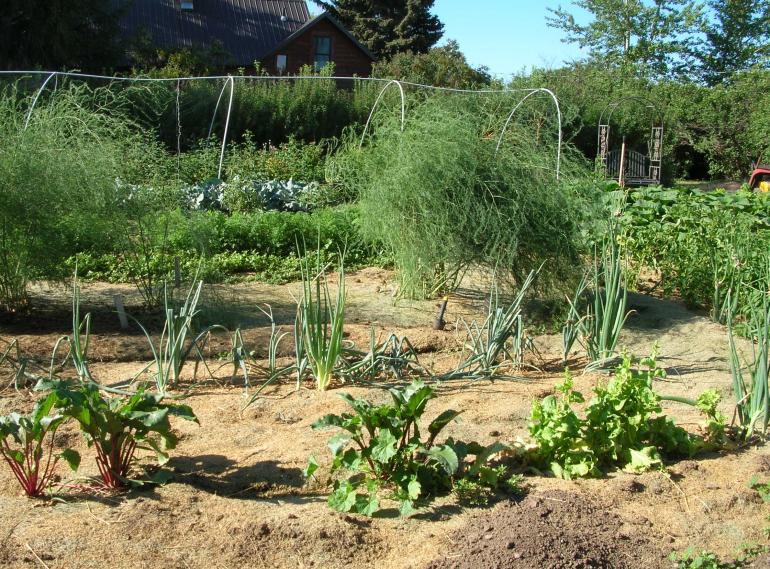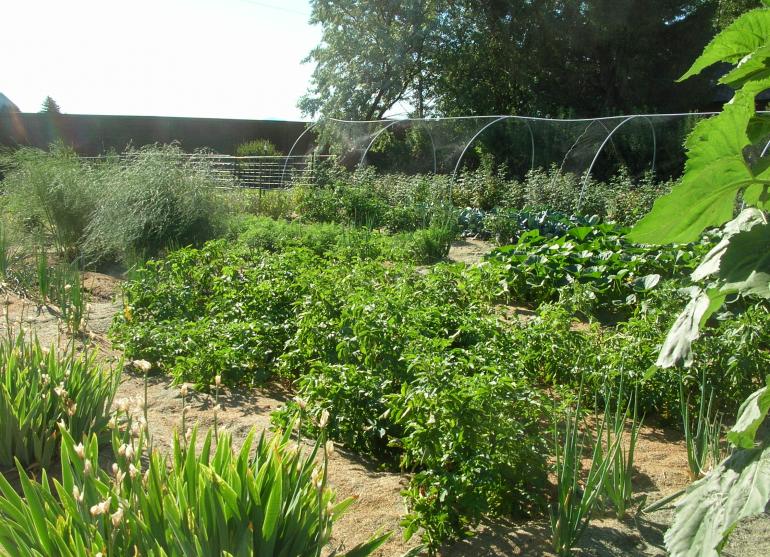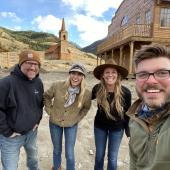Gardening Tips for High Altitude
Montanans are noted for their independence and love of good food. In the pursuit of quality produce they turn to backyard gardening despite the state’s diverse soils, rainfall, and altitude. These challenges can be met if you feed the soil, plant varieties suited to grow in your plant hardiness zone, and water properly. Following these tips, you can reap the bounty of the land.

When it comes to feeding the soil, “thar’s gold” in that kitchen garbage. Any plant material is good, but not meat, fat, or oil. I like to dig trenches in the garden in the fall and fill them with the kitchen leavings all winter. It’s amazing—the soil digests everything, then feeds it to your plants. In the summer we just put all scraps in the compost. If manure is available, we till it in come fall. Mulching with leaves, grass clippings, conifer needles, and compost moderates soil temperatures, keeps weeds down, and conserves water while improving both the fertility and tilth. Now who could ask for anything more? Here in the Gallatin valley I add ground rock phosphate every few years.

Last summer I visited Annie Shirley of the 59 Ranch in Petroleum County. While touring her garden, Annie’s pet chicken Zoomie sat on her shoulder while Zoomie’s brethren were scratching and snapping up bugs. She said, “Our soil is gumbo and swallows anything you put on it. I’m talking about two tons of organic matter each year. You’d think it would make the garden rise up higher than the lawn, but for all of 20 years the soil has just swallowed it up. This was once ocean, so 10 feet down is a salt layer that compromises our ground water. We pray for rain and mulch with cottonwood leaves.” As I left, I saw Annie in my rear view mirror with Zoomie riding on her bicycle handlebars heading toward the south pasture.
Sondra Perrin (author of Organic Gardening for Cold Climates) and I have been gardening buddies since before she moved to Missoula in the 70’s. She says, “Here in Missoula you can grow more than you think by extending the season. You can plant lettuces, spinach, shallots, onions and your starting sets of cold crops in April if you use a reusable Reemay cover. This product is designed to protect the plants from freezing yet let rain through to water them.” In the Gallatin valley, I’ve made 2 ½ inch deep trenches for planting and covered them as she did. Sondra also adds, “At all times, even in summer and fall, be prepared to cover your plants.”
If you’re chomping at the bit to get started planting, March is the time. Short, high altitude summers can be extended either by potting indoors, using south windows or indoor grow lights. Another alternative is to re-purpose old windows into a hot bed or cold frame. We did this in the years before we turned an old garage into a greenhouse, complete with ventilation system and rainwater collectors.
Jack Heaton, long-time gardener for the Tinsley Living History Farm at the Museum of the Rockies in Bozeman, recounted that some Native American tribes planted squash around the perimeter of their corn plots to deter deer. Apparently the critters don’t like to walk through it. They also planted pole beans around the corn hills to provide support for the bean plants. One might adapt similar practices to suit their situations. The Native garden at the Tinsley house was patterned after that of Buffalo Bird Woman.

Back in the early 70s, when I wrote Sunshine Soil and Short Seasons, I hadn’t been able to harvest a crop of cucumbers, despite trying various varieties for years. As soon as the book came out, my fortune changed and I beheld a bumper crop. Last summer I planted one row, which spread over four feet of turf, the length of their allotted row, threatening the beans planted a yard away. We harvested a couple of bushels. The thing to remember is that each year and each crop is an adventure. Never get discouraged. Don’t be afraid to experiment and try new things.
My Missoula friend Sondra’s favorite tomato is any that is not a hybrid. She wants to save the seeds. She recommends Fireball, Delicious, and Black Krim. I’ve been saving seeds from a yellow heirloom tomato that my daughter brought me from a restaurant in D.C. Unfortunately I haven’t a clue as to what it is, but it has a spicy tang to it. Another seed came from a friend north of Edmonton, Alberta. It is an Early Cold Set — not large but robust in flavor. We’ve been enjoying Yukon Gold potatoes and Sondra likes Princess, a French potato that keeps beautifully and doesn’t sprout in the bin. She raves about the Russian potato Banana Fingerling. These are also yellow potatoes. She says both are long, but the Russian is the more uniform.

When space is limited, I recommend you incorporate a few treasured vegetable plants into your flower beds. Some plants, such as tomatoes and pepper, can be beautiful additions to warm sunny locations. Plants, such as cabbage, kale, and lettuces can be worked into more shaded spots. Don’t forget, veggies can also be planted in raised beds and/or in containers on decks and patios. I mix beans and marigolds, garden peas with sweet peas, sunflowers on the north side of the corn. Poppies come up on their own each year.
For us the vegetables feed the body, and the flowers feed the soul.
~ Diane Elliot












Leave a Comment Here